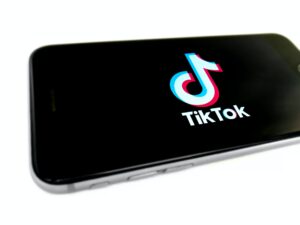[ez-toc]
In the ever-evolving world of digital marketing, mastering the vocabulary is crucial for anyone looking to thrive in this dynamic field. From SEO and PPC to CTR and ROI, these terms form the backbone of effective strategies that drive online success. Understanding the language of digital marketing not only enhances communication within teams but also empowers professionals to make informed decisions that impact their campaigns’ outcomes.
Digital Marketing Vocabulary
Mastering digital marketing vocabulary is crucial for anyone looking to excel in this dynamic industry. Common terms enhance communication and efficiency. SEO, or Search Engine Optimization, involves strategies that improve a website’s ranking on search engines. PPC, Pay-Per-Click, is an advertising model where advertisers pay a fee each time an ad is clicked. CTR, or Click-Through Rate, measures the percentage of users who click on a specific link among those who view a page or email. ROI, Return on Investment, evaluates the profitability of marketing efforts by comparing net profit to the initial cost.
Key Terms in Digital Marketing
SEO (Search Engine Optimization): Enhances website visibility on search engines through keyword optimization and backlinks. Critical for organic traffic increase.
PPC (Pay-Per-Click): An advertising model charging advertisers each time an ad is clicked. Google’s advertising platform Google Ads is prominently used.
CTR (Click-Through Rate): Ratio of users clicking an ad to total viewers. Indicates ad effectiveness.
ROI (Return on Investment): Measures profitability of marketing campaigns by evaluating gains against costs. Essential for budget allocation.
A/B Testing: Compares two versions of content to see which performs better. Optimizes conversion rates and user engagement.
CAC (Customer Acquisition Cost): Total cost to gain one customer. Key for financial planning and marketing efficiency.
Conversion Rate: Percentage of users completing desired actions, like purchases or sign-ups. Evaluates campaign success.
CPA (Cost Per Acquisition): Average cost to acquire a customer during a campaign. Important for budget management.
LTV (Customer Lifetime Value): Projected revenue from a customer over the duration of their relationship. Aligns with retention strategies.
KPI (Key Performance Indicator): Specific metrics to measure success. Tailored to project goals for continuous improvement.
Understanding these key terms provides marketers with a robust foundation to navigate the digital landscape, drive growth, and optimize campaigns effectively.
Social Media Marketing Terms
Engaging with social media platforms requires familiarity with specific jargon. Key terms include:
- Engagement Rate: Measures interactions such as likes, shares, and comments on social media posts relative to the number of followers. This metric reflects content effectiveness.
- Reach: The total number of unique users exposed to a social media post. High reach indicates greater potential audience impact.
- Impressions: Tracks the number of times a post appears in users’ feeds, including multiple views by the same user, indicating content visibility.
- Hashtag: A word or phrase preceded by a ‘#’ symbol, used to categorize and improve discoverability of social media content.
- Influencer Marketing: Collaborating with individuals who have significant social media followings to promote products or services, often expanding brand awareness and credibility.
- Content Calendar: A schedule detailing the timing and type of social media posts, aiding in organized and consistent content delivery.
- UGC (User-Generated Content): Content created by users related to a brand or product, often leveraged for authentic marketing campaigns.
Comprehending these terms equips marketers to optimize social media efforts.
Email Marketing Terminology
Email marketing terminology encompasses a range of terms critical for crafting effective campaigns. Open Rate indicates the percentage of recipients who open an email—a metric vital for assessing subject line success. Click-Through Rate (CTR) tracks the percentage of email recipients who click on a link within the email, revealing engagement level. Bounce Rate measures un-deliverable emails, with Hard Bounces being permanent delivery failures and Soft Bouncestemporary ones.
Conversion Rate refers to the percentage of recipients completing desired actions after engaging with an email. Segmentation involves dividing the email list based on specific criteria such as behavior or preferences to increase message relevance. A/B Testing enables testing of different email elements, like subject lines or call-to-action buttons, to optimize performance.
Measuring Success in Digital Marketing
Mastering digital marketing vocabulary is essential for navigating the ever-evolving landscape of online marketing. With a solid grasp of key terms, marketers can craft strategies that are both effective and innovative. Staying informed about the latest jargon not only enhances campaign performance but also ensures that marketers remain competitive. By understanding and utilizing these terms, marketers can drive growth, optimize campaigns, and ultimately measure success with precision.


